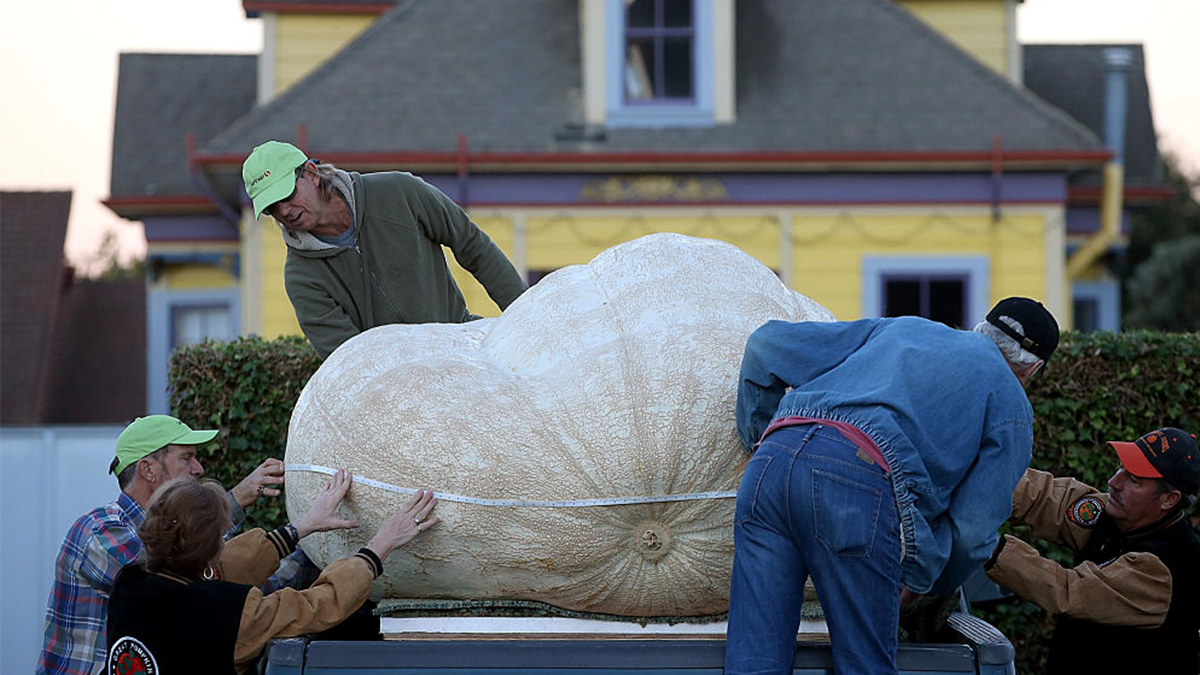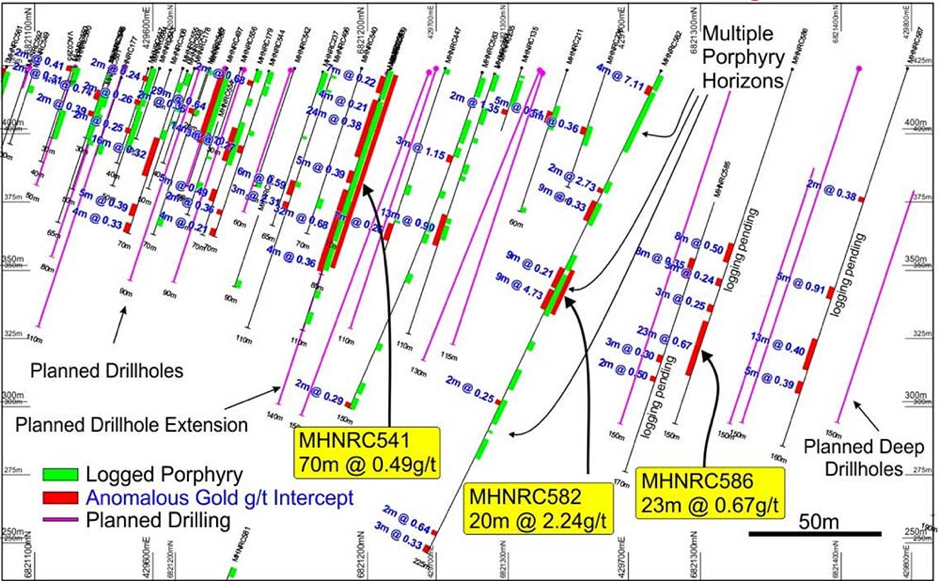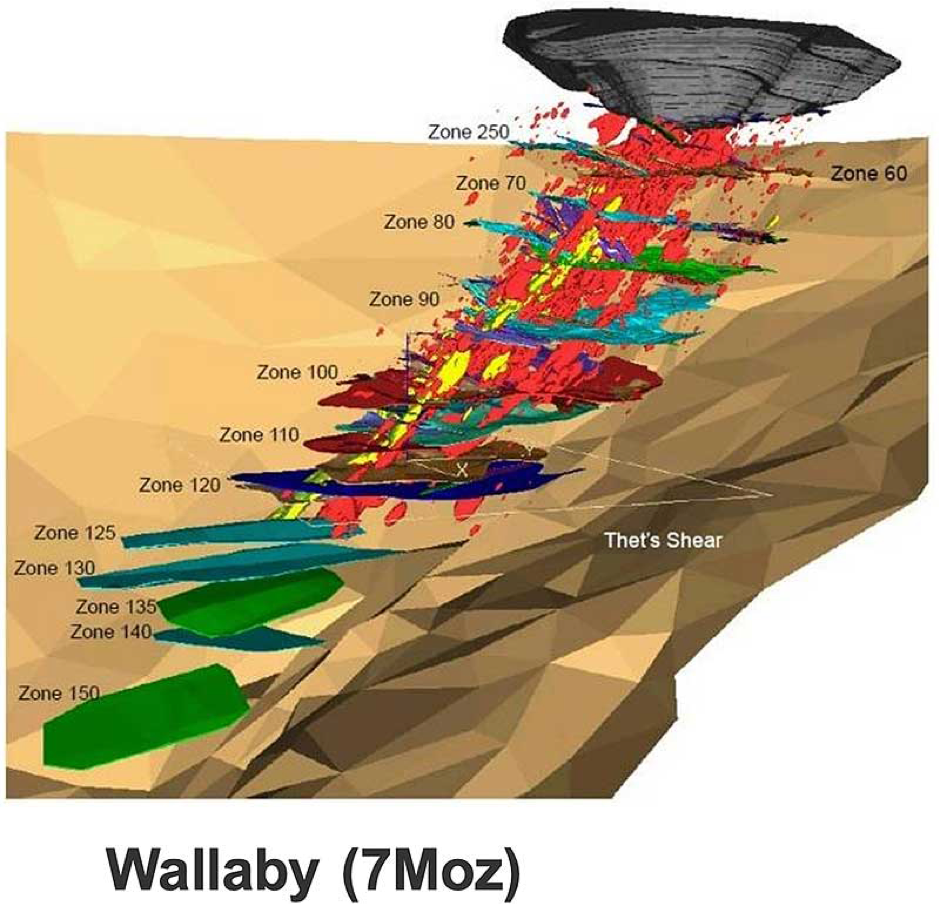Magnetic hits gold porphyry ‘feeder’ zone up to 70m thick at Hawks Nest 9

That's a Big Pumpkin, Pic:Getty
Special Report: Hard-drilling explorer Magnetic (ASX:MAU) has now uncovered three shallow and distinct gold zones at the Hawks Nest 9 (HN9) deposit, near Laverton in WA. This project continues to show early stage similarities to some of the region’s biggest multi-million-ounce gold deposits.
HN9 — a very shallow high-grade gold zone 3km long, 200m-wide and growing — is the reason Magnetic is quietly up ~575 per cent from 12.5c to 84.5c per share since the start of 2019.
Every time Magnetic drills, it finds more gold.
In the central part of the 3km-long HN9 there is a distinct ‘bend’ in the shear (source of the gold-bearing fluids) where the explorer has now discovered a substantial thickening of the gold mineralisation within a shallow dipping porphyry zone up to 70m thick.
Magnetic has defined this thickened porphyry over a 400m length so far, but it remains ‘open’ to the northeast and southwest.
Some of the thicker, most significant gold-mineralised intercepts encountered so far within this porphyry include 20m at 2.24g/t gold, 92m from surface and 70m at 0.49g/t from 13m:

There is now a total of 34 holes for 2,610m seeking to extend these thickened porphyry zones over an enlarged 700m length, Magnetic says.
Managing director George Sakalidis says HN9 is already shaping up and has potential to be a large-scale shallow deposit.
“This significant 3km mineralised zone is so far defined by 496 RC holes totalling 23,274m, is coherent and is not closed off to the northwest and at depth and a new northeast trending thickened mineralised porphyry feeder zone is also open in both directions and is being drill tested over a 700m length,” he says.
But Magnetic believes HN9 has the potential to be something much bigger.
Many discoveries in the region have been made by drilling below 100m. The average hole depth at HN9 is only 46m, providing tremendous upside potential.
The discovery of multiple shallow dipping zones – most recently this mineralised porphyry feeder zone up to 70m thick – supports Magnetics’ theory that it is sitting on a 7Moz Wallaby lookalike.
All the nearby large deposits in the region, including Wallaby (7Moz), Sunrise Dam (10Moz) and Jupiter (1.3Moz), “have persistent internal shallow dipping mineralised lodes, or zones”, Magnetic says.
At Wallaby, these zones have been defined down to 1500m depth.

“The discovery of a thick mineralised intrusive porphyry feeder zone up to 70m thick and further new intersections plunging to the north augers well for further infill down dip and down plunge extensive drilling that has already begun,” Sakalidis says.
“The NW extension of the 3km long shear zone for a further 1.75km will be drill tested in the future and numerous soil geochemical surveys are planned along this shear and parallel structures.
“Also, further holes are planned to test the successfully drilled thickened porphyry zones that were shown up by detailed ground magnetic surveys.
“A very ambitious drill program of 91 holes for 5997m has already begun; we are looking forward to testing a number of promising intersections and potential extensions.”
NOW READ: George Sakalidis — finding significant deposits where the ‘big guys’ can’t
This story was developed in collaboration with Magnetic Resources, a Stockhead advertiser at the time of publishing.
This story does not constitute financial product advice. You should consider obtaining independent advice before making any financial decisions.
Related Topics

UNLOCK INSIGHTS
Discover the untold stories of emerging ASX stocks.
Daily news and expert analysis, it's free to subscribe.
By proceeding, you confirm you understand that we handle personal information in accordance with our Privacy Policy.








